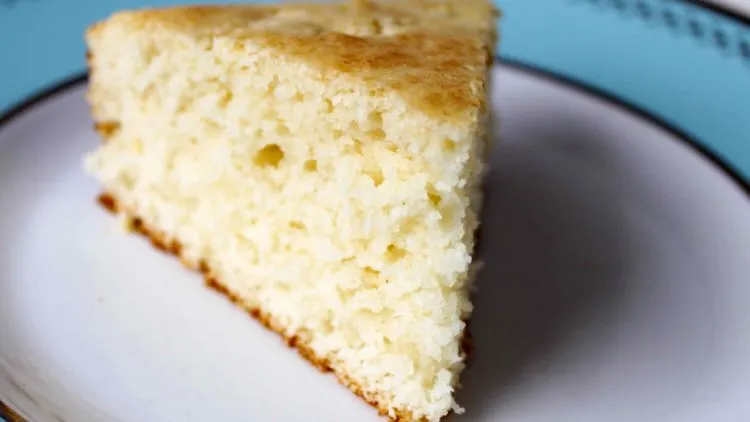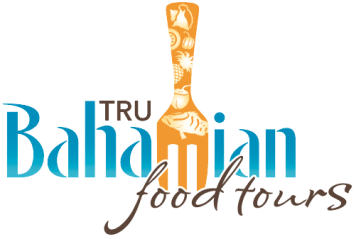Tru Bahamian Must Eat: Johnny Cake

If you’re visiting our islands for a few days, chances are likely high that you’ll encounter a slice (or two or three) of our staple “Johnny Cake” at some point during your visit. It’s often spotted in local restaurants enclosed in a tight wrapping of wax paper or tin foil and sometimes you’ll find it on display in neighbourhood bakeries, where it’s available by the loaf- especially in the outer islands. While here, Bahamian Johnny Cake is a definite “must eat” and a highly recommended, delicious addition to your Bahamian culinary experience.
What is this said Bahamian Johnny Cake, you may ask?
Although the “cake” within the name naturally implies sweetness, Johnny Cake doesn’t fall within the realm of a dessert by most measures. In fact, it’s actually more comparable to a bread, albeit not typically as light, airy or savoury as most varieties. In summary, most would describe Johnny Cake as having a texture that resembles a cross between a dense bread and a (only) slightly sweet cake. Made with a handful of ingredients, namely: flour, milk, butter, sugar and baking powder, Johnny Cake in The Bahamas is traditionally baked in a large round pan until lightly browned, then sliced and served in wedges.

Credit: Meats, Roots & Leaves
It turns out that the historical origins of this beloved baked good are both varied and, it seems, somewhat up to interpretation.
Most historians believe that “johnny cake” originated from native inhabitants of Northern America and is thought to be related to the term “janiken”, a native American word meaning “corn cake”. With corn as the main staple for indigenous groups across the Americas, it is highly likely that early European settlers of the mid-1500s began watching how regional tribes (like the Algonquians of the Atlantic Seaboard) used ground corn to make such corn cakes. As a result, it seems that this cornmeal flatbread spread throughout the Americas and other names emerged to describe such as:shawnee cake, johnny bread, and hoecake as well as variations on its preparation techniques.
Much has also be written to link the Johnny Cake we enjoy today in The Bahamas back to the times of the mid-Atlantic slave trade in the Southern United States. Frequently then referred to as “journey cake”, this sturdy, dense loaf made of ground corn was useful since it kept well on long trips and could be easily made over an open fire. The transition in name to “johnny cake” most likely took place in the 1760s, as this is when the food item began appearing within written records. During the 1780’s, the recipe was transported to The Bahamian islands when, in response to the American War of Independence, US Loyalists fled with their enslaved Africans to work on cotton plantations on our islands.

Credit: Adventures In All Things Food
These days, many countries and regions beyond The Bahamas still prepare some version of this simple yet highly versatile staple loaf.
Major differences only lie in the method of preparation and ingredient list. While our Bahamian Johnny Cake typically does not include corn meal, this continues to be a key ingredient Johnny Cake recipes in other Caribbean islands as well as Central & South America and along the Atlantic Coast of North America. In Jamaica, St. Croix, Columbia, and New England region of the United States,“johnny cakes” are actually prepared as small, flat, and fried griddle cakes. Bahamian Johnny Cake is usually not fried and instead, families choose to bake theirs on top of the stove or in an oven.

Credit: Sid’s Sea Palm Cooking
When It Comes To The Eating Part…
Johnny Cake is best served warm n’ straight out of the oven- then slathered liberally with butter and/or jam. (We suggest a local guava or mango variety.) It’s also commonly eaten with a few slices of mild yellow cheddar cheese for breakfast or a snack. But the slices of this down-home delicacy really show their stripes when served alongside Bahamian Chicken Souse or Stewed Fish for breakfast and weekend brunch. We use it to sturdily mop up all of that delicious and oh-so-flavourful broth. Sometimes grated coconut is baked into the Johnny Cake for even more special texture and additional sweetness. In truth, we’ll eat Johnny Cake at an opportunity we can!

Credit: Tammy
Bahamian Johnny Cake Recipe
So, there you have it. And although there is much cultural variation as most Bahamian families bake their johnny cake in their own special way, we certainly couldn’t leave you without sharing a recipe for you to try (or try to replicate if you’ve tasted it already) this comforting bread at home.
Ingredients
- ½ cup butter, room temperature + extra for greasing pan
- ¾ cups sugar
- 4 cups flour
- ½ cup water
- ½ teaspoon salt
- 2 teaspoons baking powder
- approx. ¾ cup milk
Directions
- Preheat oven to 325 degrees.
- Using an electric mixer, beat the butter and sugar together until combined.
- Add the flour, water, salt, and baking powder to the bowl.
- Add the milk slowly until the batter is sticky.
- Dust hands with flour. Transfer dough from bowl to a greased 9×9 pan. Gently flatten the dough in the pan.
- Bake for approx. 1hr or until the edges of the johnnycake are browned. The johnnycake will not rise much.
- Let cool for several minutes before cutting into the johnnycake.
This simple recipe will provide you with a warm, delicious addition to your breakfast, lunch, snack or dinner. Enjoy, and happy eating from all of us at Tru Bahamian Food Tours!
